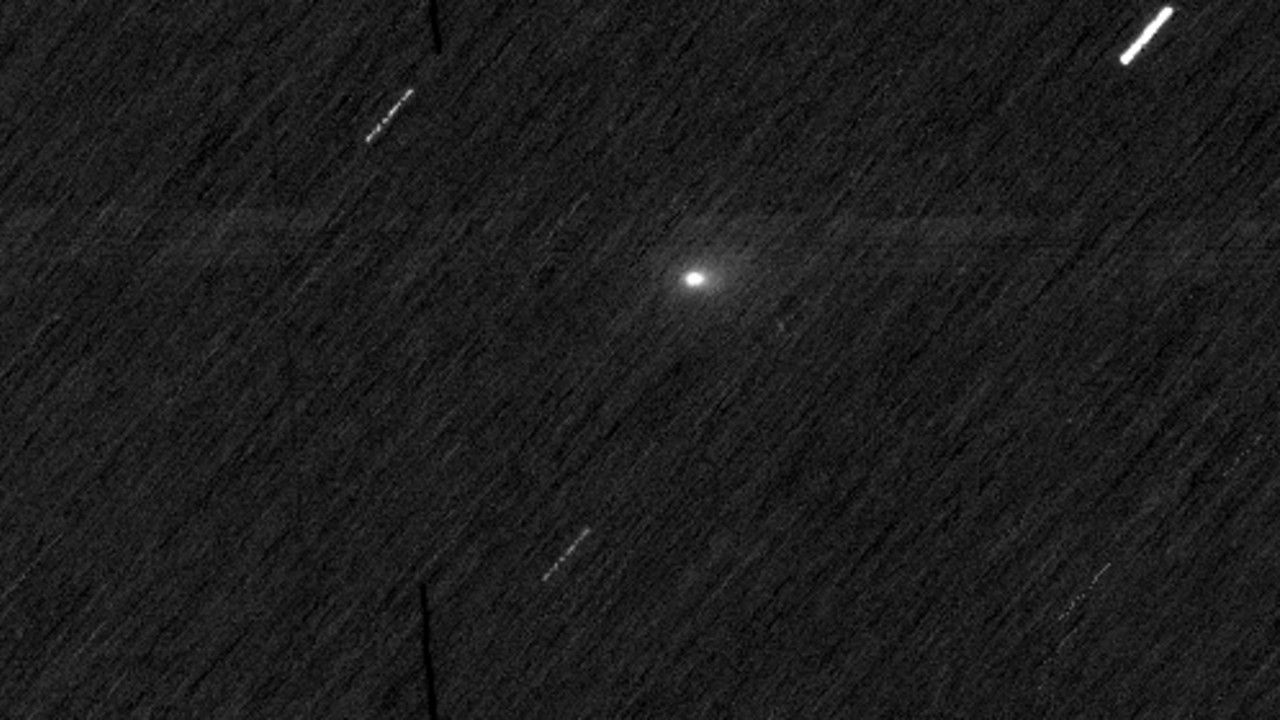A European Mars orbiter successfully observed the interstellar comet 3I/ATLAS as it made a historic flyby of the Red Planet on October 3, 2023. The comet approached within approximately 19 million miles (30 million kilometers) of Mars, providing a unique opportunity for scientists to gather data and imagery of this remarkable celestial visitor.
The European Space Agency (ESA) utilized its ExoMars Trace Gas Orbiter (TGO) to capture images of the comet using its advanced Colour and Stereo Surface Imaging System (CaSSIS). This observation posed significant challenges, as described by CaSSIS Principal Investigator Nick Thomas, who noted that “the comet is around 10,000 to 100,000 times fainter than our usual target.” This remark highlights the difficulty of observing objects that are not only distant but also dimmer than typical celestial targets.
The comet, first identified in July 2023 by the Asteroid Terrestrial-impact Last Alert System (ATLAS) telescope located in Río Hurtado, Chile, is notable for being the third confirmed interstellar object to pass through our solar system. Its designation as “3I” indicates its position in the sequence of observed interstellar bodies, following 1I/’Oumuamua in 2017 and 2I/Borisov in 2019.
Understanding these interstellar visitors is vital for astronomers, as they provide insights into the formation of worlds beyond our own. ESA officials emphasized this point, stating, “Every planet, moon, asteroid, comet, and lifeform in our solar system share a common origin. But interstellar comets are true outsiders, carrying clues about the formation of worlds far beyond our own.” According to current scientific assessments, 3I/ATLAS is believed to be the oldest comet recorded, with an estimated age of around three billion years older than our solar system.
The observations conducted by TGO are part of a broader ESA campaign aimed at studying 3I/ATLAS during its journey through the solar system. Another ESA spacecraft, the Mars Express orbiter, which has been operational since 2003, also attempted to photograph the comet on the same day. Unfortunately, the Mars Express team has not yet resolved the comet in their images, partly due to the shorter exposure time of just 0.5 seconds, compared to the five seconds used by the TGO.
Colin Wilson, who serves as the Mars Express and ExoMars project scientist at ESA, expressed excitement regarding the ongoing contributions of Mars orbiters to scientific knowledge. “Though our Mars orbiters continue to make impressive contributions to Mars science, it’s always extra exciting to see them responding to unexpected situations like this one,” he stated.
As the comet continues its trajectory, additional observations will be conducted by other spacecraft. The JUICE probe, which is en route to Jupiter, is scheduled to begin observing 3I/ATLAS on November 2, 2023, just days after the comet’s closest approach to the sun. This approach will occur at a distance of 130 million miles (210 million kilometers), and astronomers expect the comet to exhibit increased activity at this point, enhancing the likelihood of capturing clearer images.
The excitement surrounding 3I/ATLAS illustrates the ongoing fascination with celestial phenomena and the scientific community’s commitment to understanding the universe. As researchers analyze the data collected from these observations, they hope to unravel the mysteries that interstellar comets like 3I/ATLAS bring to light.
